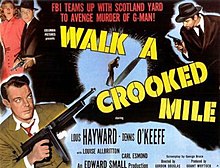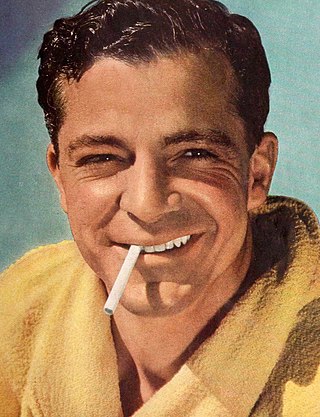
Carver Dana Andrews was an American film actor who became a major star in what is now known as film noir. A leading man during the 1940s, he continued acting in less prestigious roles and character parts into the 1980s. He is best known for his portrayal of obsessed police detective Mark McPherson in the noir Laura (1944) and his critically acclaimed performance as World War II veteran Fred Derry in The Best Years of Our Lives (1946).

Susan Hayward was an Academy Award-winning American film actress, best known for her film portrayals of women that were based on true stories.

Dennis O'Keefe was an American actor and screenwriter.
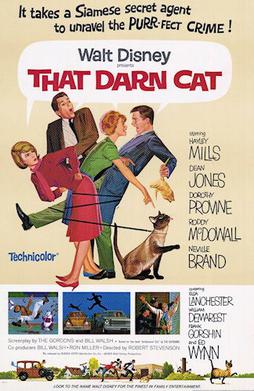
That Darn Cat! is a 1965 American thriller comedy film directed by Robert Stevenson and starring Hayley Mills and Dean Jones in a story about bank robbers, a kidnapping and a mischievous cat; produced by Walt Disney Productions. The film was based on the 1963 novel Undercover Cat by Gordon and Mildred Gordon. The title song was written by the Sherman Brothers and sung by Bobby Darin. The 1997 remake includes a cameo appearance by Dean Jones.

Louis Charles Hayward was a South African-born, British-American actor.
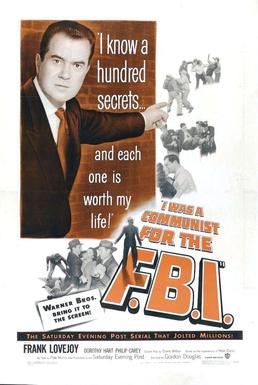
I Was a Communist for the FBI is a 1951 American film noir crime film directed by Gordon Douglas and starring Frank Lovejoy. The film was produced by Bryan Foy who was head of Warners B picture unit until 1942.
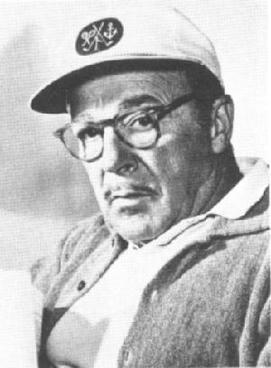
Gordon Douglas Brickner was an American film director and actor, who directed many different genres of films over the course of a five-decade career in motion pictures.
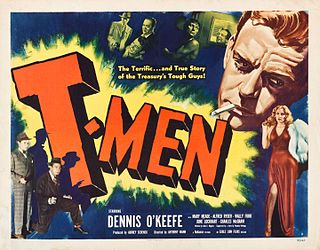
T-Men is a 1947 semidocumentary and police procedural style film noir about United States Treasury agents. The film was directed by Anthony Mann and shot by noted noir cameraman John Alton. The production features Dennis O'Keefe, Mary Meade, Alfred Ryder, Wallace Ford, June Lockhart and Charles McGraw. A year later, director Mann used the film's male lead, Dennis O'Keefe, in Raw Deal.
Edward Small was an American film producer from the late 1920s through 1970, who was enormously prolific over a 50-year career. He is best known for the movies The Count of Monte Cristo (1934), The Man in the Iron Mask (1939), The Corsican Brothers (1941), Brewster's Millions (1945), Raw Deal (1948), Black Magic (1949), Witness for the Prosecution (1957) and Solomon and Sheba (1959).

The Woman on Pier 13 is a 1949 American film noir drama directed by Robert Stevenson and starring Laraine Day, Robert Ryan, and John Agar. It previewed in Los Angeles and San Francisco in 1949 under the title I Married a Communist but, owing to poor polling among preview audiences, this was dropped prior to its 1950 release.
The Federal Bureau of Investigation (FBI) has been a staple of American popular culture since its christening in 1935. That year also marked the beginning of the popular "G-Man" phenomenon that helped establish the Bureau's image, beginning with the aptly titled James Cagney movie, G Men. Although the detective novel and other police-related entertainment had long enthralled audiences, the FBI itself can take some of the credit for its media prominence. J. Edgar Hoover, the Bureau's "patriarch", took an active interest to ensure that it was not only well represented in the media, but also that the FBI was depicted in a heroic, positive light and that the message, "crime doesn't pay", was blatantly conveyed to audiences. The context, naturally, has changed profoundly since the 1930s "war on crime", and especially so since Hoover's death in 1972.

Reed Hadley was an American film, television and radio actor.
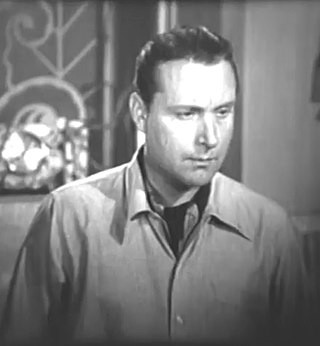
Donald Douglas was a Scottish actor in the United States who performed in films, on the stage and in radio.

The Story of Dr. Wassell is a 1944 American World War II film set in the Dutch East Indies, directed by Cecil B. DeMille, and starring Gary Cooper, Laraine Day, Signe Hasso and Dennis O'Keefe. The film was based on a book of the same name by novelist and screenwriter James Hilton.

Lured is a 1947 American film noir directed by Douglas Sirk and starring George Sanders, Lucille Ball, Charles Coburn, and Boris Karloff. The film is a remake of 1939 French film Pièges directed by Robert Siodmak, which was titled Personal Column in the United States; Personal Column was also the title of this film when it was originally released. It did not do good business under that name – the code administration was concerned that some people thought the film was titled "LURID", so United Artists pulled it from circulation, and subsequently re-released it with the current title.

John Miljan was an American actor. He appeared in more than 200 films between 1924 and 1958.
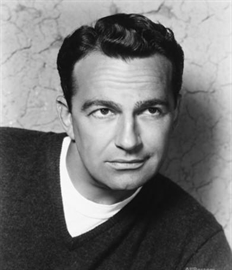
John Bentley was a British film actor. He had a successful career as a leading man from the 1940s to the late 50s and was a popular heart-throb who appeared in many British b-movies during that time. Later in his career, in the 1970s he appeared as Hugh Mortimer, Meg Richardson's ill-fated third husband in the famous English soap opera Crossroads. He also starred in the jungle adventure series African Patrol (1957) as Chief Inspector Paul Derek and made various other guest appearances in many popular TV series from the late 50s onwards.

The Black Arrow is a 1948 American adventure film directed by Gordon Douglas and starring Louis Hayward and Janet Blair. It is an adaptation of the 1888 novel of the same title by Robert Louis Stevenson.

Sky Murder is a 1940 detective film starring Walter Pidgeon as detective Nick Carter in his third and final outing for MGM as Nick Carter. The film was part of a trilogy based on original screen stories starring the popular literary series character. In the heightened tensions prior to World War II, Hollywood produced many films in the spy film genre such as Sky Murder.
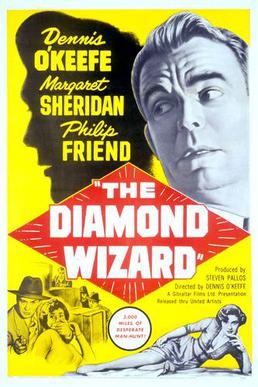
The Diamond is a 1954 British film noir crime film directed by Montgomery Tully/Dennis O'Keefe and starring Dennis O'Keefe, Margaret Sheridan and Philip Friend. It is based on the 1952 novel Rich Is the Treasure by Maurice Procter. It was released by United Artists in Britain and in America, where it was known as The Diamond Wizard.
